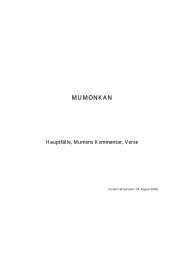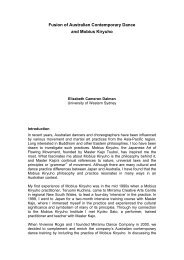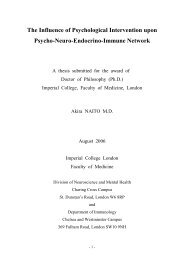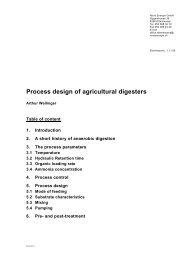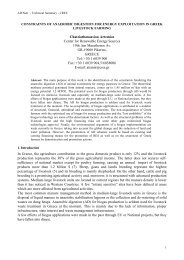III. No-Till Farming Systems - nifty
III. No-Till Farming Systems - nifty
III. No-Till Farming Systems - nifty
You also want an ePaper? Increase the reach of your titles
YUMPU automatically turns print PDFs into web optimized ePapers that Google loves.
Introduction*<br />
Lester R. Brown<br />
In 1938, Walter Lowdermilk, a senior official in the Soil Conservation Service<br />
of the U.S. Department of Agriculture, traveled abroad to look at lands that<br />
had been cultivated for thousands of years, seeking to learn how these older civilizations<br />
had coped with soil erosion.<br />
He found that some had managed their land well, maintaining its fertility over<br />
long stretches of history, and were thriving. Others had failed to do so and left<br />
only remnants of their illustrious pasts.<br />
In a section of his report entitled “The Hundred Dead Cities,” he described a<br />
site in northern Syria, near Aleppo, where ancient buildings were still standing in<br />
stark isolated relief, but they were on bare rock. During the seventh century, the<br />
thriving region had been invaded, initially by a Persian army and later by nomads<br />
out of the Arabian Desert. In the process, soil and water conservation practices<br />
used for centuries were abandoned. Lowdermilk noted, “Here erosion had done<br />
its worst. ... If the soils had remained, even though the cities were destroyed and<br />
the populations dispersed, the area might be re-peopled again and the cities rebuilt,<br />
but now that the soils are gone, all is gone.”<br />
<strong>No</strong>w fast forward to a trip in 2002 by a United Nations team to assess the food<br />
situation in Lesotho, a small country of 2 million people imbedded within South<br />
Africa. Their finding was straightforward: “Agriculture in Lesotho faces a catastrophic<br />
future; crop production is declining and could cease altogether over large<br />
tracts of the country if steps are not taken to reverse soil erosion, degradation, and<br />
the decline in soil fertility.”<br />
Michael Grunwald reports in the Washington Post that nearly half of the children<br />
under five in Lesotho are stunted physically. “Many,” he says, “are too weak<br />
to walk to school.”<br />
Whether the land is in northern Syria, Lesotho, or elsewhere, the health of the<br />
people living on it cannot be separated from the health of the land itself. A large<br />
share of the world’s 852 million hungry people live on land with soils worn thin<br />
by erosion.<br />
The thin layer of topsoil that covers the planet’s land surface is the foundation<br />
of civilization. This soil, measured in inches over much of the earth, was formed<br />
over long stretches of geological time as new soil formation exceeded the natural<br />
rate of erosion. As soil accumulated over the eons, it provided a medium in which<br />
plants could grow. In turn, plants protect the soil from erosion. Human activity is<br />
disrupting this relationship.<br />
3




